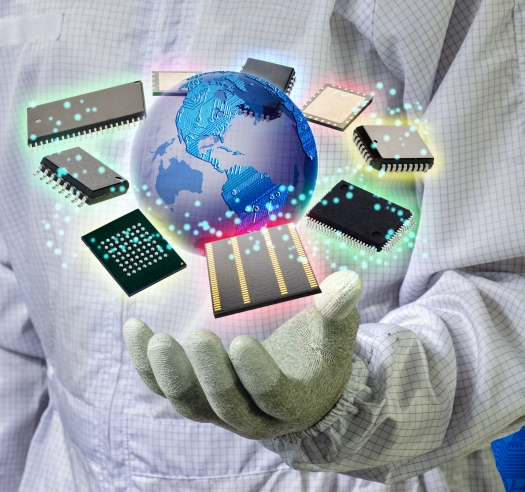IHS: Microsoft to jump to 8th largest chip buyer

Following the Nokia acquisition, Microsoft is anticipated to spend around $5.9 billion next year on semiconductor chips, up from $3.78 billion this year
With its upcoming acquisition of Nokia, Microsoft Corp. is set to become one of the world's Top 10 original equipment manufacturer (OEM) semiconductor buyers, and will rank among the leading purchasers of microchips for wireless applications.
Microsoft, in 2014, is expected to become the eighth-largest OEM chip buyer, according to the Semiconductor Design and Spend Analysis service of IHS Inc. This is up from No. 13 this year and 15th place in 2012.
Microsoft will spend an estimated $5.9 billion next year on semiconductors, up from $3.55 billion in 2012 and from $3.78 billion this year. The 2012 and 2013 revenue figures do not include spending generated by the Nokia buyout, while 2014 presents post-acquisition purchasing. The Nokia deal will add about $2 billion to what Microsoft would otherwise spend on semiconductors for 2014.
Wireless surge
Microsoft's new higher standing in 2014 also means it will be vying for fourth place in chip spending for wireless applications - along with a group of companies including ZTE, LG Electronics, TCL, and Ericsson. If Microsoft takes the No. 4 rank in wireless chip purchasing in 2014, it will still be behind market leaders Apple, Samsung Electronics and Huawei Technologies.
The Nokia acquisition will dramatically increase Microsoft's spending in the wireless segment. Prior to the deal, Microsoft purchased a relatively small quantity of semiconductors for its Surface line of tablets, some of which are classified as wireless devices. The company spent just $85 million in 2012 and will expend $110 million in 2013 on wireless chips.
The majority of the company's chip spending in recent years was related to its Xbox 360 video game console, which is regarded as a consumer electronics device.
For Microsoft, approximately 37 percent of its $5.9 billion spend in 2014 - equivalent to $2.2 billion - will be spent next year on chips for wireless devices like smartphones and tablets.
"Nokia is achieving some success with its Windows-based phones, even though sales of these handsets still trail well behind the market leaders, Android and Apple iOS," says Myson Robles-Bruce, senior analyst, semiconductor spend and design.
"One challenge for Microsoft will be formulating a strategy for success and deeper penetration of its smartphone and tablet lines. Microsoft also will need to figure out how to address its problematic positioning, with the company continuing to license Windows systems to other OEMs that sell devices with which Microsoft competes," points out Robles-Bruce.
Getting out the vote
Nokia shareholders are expected to vote on the Microsoft acquisition on November 19th. The deal must also pass separate regulatory approvals in the United States, the European Union, China and elsewhere.
IHS says the purchase of Nokia will not expand Microsoft's revenue this year. But the deal will result in 10 percent revenue growth in 2014 for the noted maker of Windows software, now also striving to compete with former archrival Apple in wireless devices like smartphones and tablets.
Microsoft has stated that the acquisition will not yield profits until 2016, when net income generated by the deal will offset the costs of acquisition and integration.

































